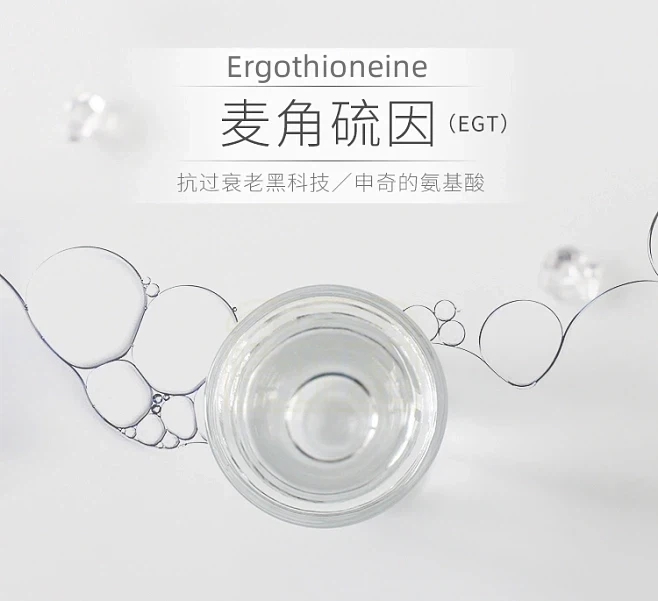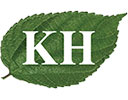Ergothioneine
2024.09.27
Ergothioneine (EGT) is one of rare natural amino acids belonging to Imidazoles alkaloids, which cannot be synthesized by animals themselves, but exists in many animals and plants and can be ingested from food.
At present, the best source of ergothioneine is made from mushroom mycelium, which is the main source for low-cost and large-scale production of ergothioneine. Through deep fermentation technology biosynthesis preparation, the fermentation process control means such as metabolic regulation can effectively improve the yield of ergothioneine, reduce the production cost and ensure the safety of products.

Main function and mechanism of ergothioneine
Ergothioneine plays a unique role in cell synthesis and has strong antioxidant activity. It is widely found in human blood, internal organs, bacteria and plants. It has vitamin-like effects and has various physiological functions such as scavenging free radicals, anti-aging, anti-radiation, maintaining DNA synthesis and normal cell growth. Ergothioneine has coenzyme-like properties, participates in a variety of biochemical activities of the human body, external use on skin can improve the activity of cortical cells, has the effect of anti-aging.
Ergothioneine can regulate cellular REDOX reaction, participate in cellular energy regulation, is a physiological protective agent of cells, biological and pharmacological properties and its safety and stability. Therefore, adding ergothioneine to a product can not only maintain the stability of other ingredients, but also promote the absorption of active ingredients by cells, which has a good synergistic effect, effectively improve the efficacy of other ingredients, and achieve the effect of 1+1 > 2. For example, the use of ergothioneine in an antioxidant product can not only play a powerful antioxidant effect on its own, but also cooperate with other antioxidants to enhance its vitality.
Anti-aging effect
Prevention of cancer
Detoxification
Maintain the biosynthesis of DNA
Maintain normal cell growth
Maintain cellular immune function
In cosmetics, ergothioneine has the following effects:
1. Whitening
Ergothioneine is a natural antioxidant that is highly protective and non-toxic to cells and is not easily oxidized in water, which allows them to activate the cells' natural antioxidant defense system in certain tissues, blocking pigmentation and pigmentation, and whitening the skin.
2. Anti-aging
Strong antioxidant, delay aging. Ergothioneine and its derivatives can reduce or even prevent protein glycosylation, thereby preventing age-related loss of skin elasticity, modifying and improving facial contours, and preventing or improving orange skin lines.
3. Sunscreen
In the ultraviolet absorption range, ergothioneine has a similar absorption wavelength to DNA, which can minimize the formation of reactive oxygen species and protect cells from radiation damage. Therefore, ergothioneine can be used as a physiological filter of ultraviolet. Ergothioneine is a very effective sunscreen ingredient that can protect the skin from UV radiation.
Anti-inflammatory, acne
Inflammation is the body's response to an infection of the skin, and it can be caused by excessive UV exposure and stress. Studies have shown that ergothioneine has an anti-inflammatory effect in skin cells, and that it can be combined with vitamin C for a greater effect. The combination of aidibene and ergothioneine can reduce UV - induced skin inflammation and light damage.
Recommended dosage: 0. 02%-0. 05% for whitening products
Sunscreen products 0. 01%-0. 03% suitable for people: all.
Extended reading on ergothioneine and mushroom mycelium
(https://cjb.ijournals.cn/html/cjbcn/2022/4/gc22041408.htm)
Ergothioneine can be synthesized by a variety of natural fungi, including enoki mushrooms, They also include Pleurotus ostreatus, Lentinus edodes, Ganoderma neo-japonicum, Boletus edulis, Agaricus bisporus), Pleurotus eryngii, Pleurotus citrinopileatus, etc. Tepwong et al. studied the fermentation process of lentinus edodes mycelium to produce ergothioneine. When 25 g/L fructose and 1 g/L aspartic acid were used as carbon sources, the output of ergothioneine in mycelium reached 1.89 mg/g DW, 3.15 times that of the control group. When 2 mmol/L methionine was added into the medium, the yield of ergothioneine in mycelium could reach 3.45 mg/g DW after 15 days of fermentation. When Lee et al. studied the fermentation process of purple black Ganoderma lucidum mycelium to synthesize ergothioneine, they found that different kinds of amino acids and different concentrations had very different effects on the synthesis and accumulation of ergothioneine, among which methionine had the most obvious promoting effect on the accumulation of ergothioneine, followed by cysteine and histidine. When 2 mmol/L methionine, cysteine and histidine were added into the medium, the content of ergothioneine in mycelium reached 1.86 mg/g DW after 10 days of fermentation, which was converted to 15.42 mg/L in the fermentation solution. Liang et al. studied the fermentation process of ergothioneine production from mycelium of eryngium eryngium in 10 L tank, and the liquid filling and inoculation amount were set at 70% and 10%. On the 5th day of fermentation, 4 mmol/L histidine, 1 mmol/L cysteine and 1 mmol/L methionine were added into the medium. On the 18th and 20th days of fermentation, the content of ergothioneine in mycelium reached 5.76−5.84 mg/g DW, which was about 64.2 mg/L in fermentation solution. Lin et al. prepared ergothioneine by deep fermentation in the mycelium of Pleuria auriculata, and obtained the optimal carbon source and optimal nitrogen source of ergothioneine fermentation by optimizing the medium as glucose and tryptone. On the 7th day of fermentation, 8 mmol/L cysteine, 4 mmol/L histidine and 0.5 mmol/L methionine were added, and the content of ergothioneine in mycelium reached 12.99 mg/g DW on the 16th day of fermentation, which was converted to 97.69 mg/L in the fermentation solution. Tang Baotha et al. studied the optimization process of the medium for the synthesis of ergothioneine by deep fermentation of Pleueryngium eryngii, and found that adding aspartic acid, cysteine, histidine, arginine and glutamic acid could improve the accumulation of ergothioneine, among which histidine had the most significant promoting effect. The optimum carbon and nitrogen sources were grits meal and peptone, and the yield of ergothioneine reached 20.5 mg/L after 7 days of fermentation.
The author obtained the mushroom strains with high ergothioneine yield by screening, studied the effects of amino acids, precursors and exogenous nutrition factors on the synthesis and accumulation of ergothioneine, and established the deep fermentation control strategy of high intensity accumulation of ergothioneine by using edible medium components. The accumulation amount of ergothioneine in shaking flask fermentation liquid was more than 500 mg/L. The pilot - scale tank fermentation of a high - yielding strain was completed. In addition, since most of the ergothione synthesized by microorganisms accumulates inside cells, it can only be detected and utilized outside the cells. In order to meet the requirements of production safety and product safety in many fields, the research team of the author also established the all-aqueous extraction process of intracellular ergothioneine. Hot water was used instead of organic solvent as the extraction agent to extract intracellular ergothione, and the extraction rate reached 97.1% after optimization of the extraction process.
The biggest advantage of using natural edible fungi without genetic engineering to prepare ergothioneine is the food safety of the strains and products. If the components of the medium are edible, the safety of ergothioneine fermentation solution is higher. Compared with genome, transcriptome and other omics, the studies on mushroom metabolomics are relatively few. By analyzing the metabolome of fermentation process to guide fermentation process optimization, the fermentation accumulation level of ergothioneine can be further improved and the production cost can be reduced.
The highest fermentation level for natural mushroom fermentation of ergothioneine has exceeded 500 mg/L, and the fermentation period is usually 10−20 days. The fermentation cycle of engineering bacteria can be controlled within 3−9 days, and the highest fermentation level has reached 1.3g /L, but the products need to be purified and used.
Packing specification: 1kg aluminum foil bag, lined with double plastic bag.
Storage method: Store in a dry and ventilated place, away from direct sunlight and high temperature.
 Share
Share


